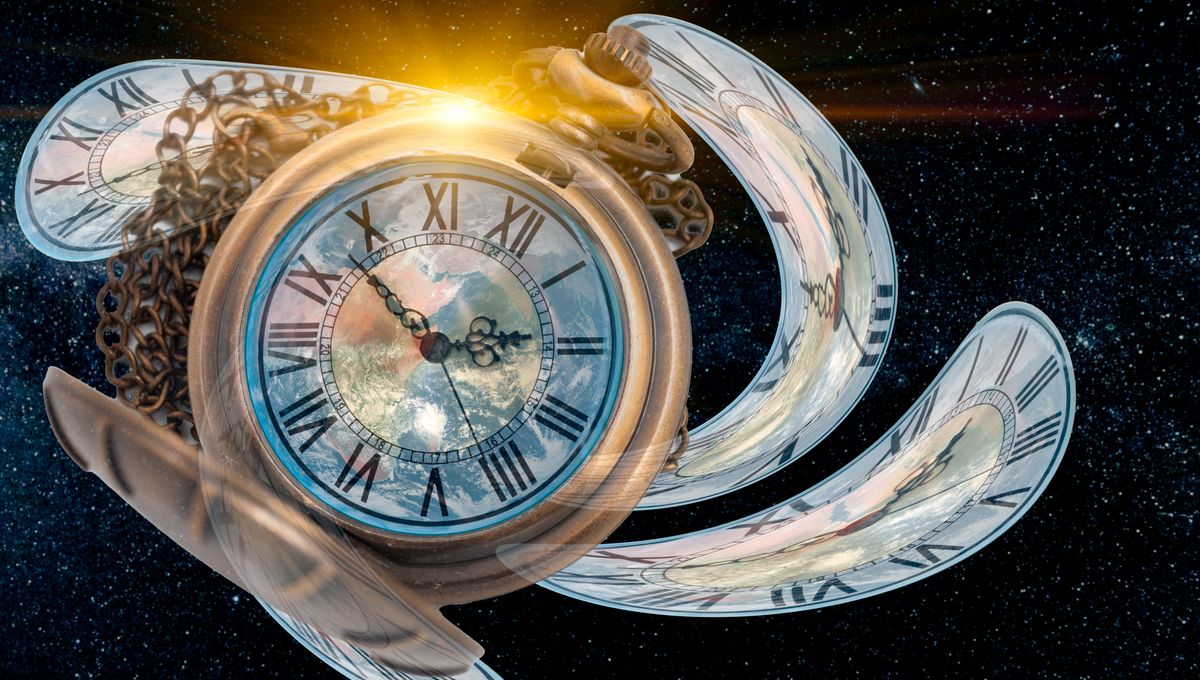
A new theory of the fabric of the universe has proposed that time has three dimensions. Moreover, this model leads to the conclusion that these three time dimensions are the true underlying feature of the universe, and the dimensions collectively known as space are just a byproduct, one might even say an offshoot. Currently this is just one of a great many proposals about the dimensions that make up the universe, with most other physicists yet to express a judgement as to its plausibility.
We experience time passing, irrespective of what we do, in a way we don’t for the dimensions of space, and therefore intuitively consider it something quite different. So it was a shock when Einstein argued there are really four dimensions of a single quantity, which he named spacetime.
The idea that time is just another dimension like length or height meets a lot of resistance from non-physicists for the same reason – it doesn’t feel the same to us. However, Einstein’s model works so well for explaining, and indeed predicting, what we see that it has become part of physicists’ standard toolkit.
Plenty of effort has gone into explaining why time only flows one way (at least in our experience), but some physicists have even greater ambitions, promoting more exotic hypotheses such as string theory, where there are 11 dimensions, of which space and time are just four. The work of Dr Gunther Kletetschka of the University of Alaska Fairbanks is the latest multi-dimensional alternative, and not even the first to propose three time dimensions.
The idea of time being triplicate is not just a case of physicists’ shower thoughts. Instead, Kletetschka argues, it is hinted at on scales from quantum phenomena to what we know of cosmological evolution. However, previous models of how these dimensions relate have produced apparent paradoxes, which Kletetschka says his work avoids.
Kletetschka claims that if we could move in all three dimensions of time, instead of just one, we could experience multiple versions of the same reality, like the multiverse idea science fiction writers love to play with.
If you could move in the second time dimension you might encounter slightly different versions of the day you started in, becoming more different the further you go along that timeline. If you were not also traveling in familiar time, you’d experience these versions of the same moment without moving on, like Groundhog Day reduced to a second. Alternatively, you might move in two time dimensions at once, encountering successively slightly later versions of each reality. Meanwhile, the third time dimension provides the means to move from reality to another.
“Three time dimensions are the primary fabric of everything, like the canvas of a painting,” Kletetschka said in a statement. “Space still exists with its three dimensions, but it’s more like the paint on the canvas rather than the canvas itself.” Feel small already?
“Just as matter curves spacetime in General Relativity, here the paper proposes that what we perceive as mass and energy are manifestations of temporal curvature and dynamics,” Kletetschka writes.
We only experience one dimension of time, Kletetschka writes, because the other two “become apparent only at extreme scales.”
Many existing exotic models of a higher dimensional universe have been criticized because they are so hard to explore experimentally. In some cases we have no idea how to test them at all; in others we do, but it requires building particle accelerators far more powerful than those we have today.
This is where Kletetschka says his idea stands out. “Earlier 3D time proposals were primarily mathematical constructs without these concrete experimental connections,” he said. “My work transforms the concept from an interesting mathematical possibility into a physically testable theory with multiple independent verification channels.”
The new theory requires certain subatomic particles to have specific masses. In the cases of those where these masses are known, including the top quark and the electron, the values Kletetschka calculates match those that have been measured very precisely.
A much tougher test is whether Kletetschka can use his model to correctly predict the mass of particles we haven’t measured yet. He has predicted that two neutrino types have masses of 0.058 and 0.0086 eV, with 7 and 4 percent precision respectively. He also claims to be able to predict subtle differences in the speed of gravitational waves and of light, normally treated as equal.
“These signatures will be testable through next-generation collider experiments, gravitational wave observatories, and cosmological surveys in the 2025–2030 timeframe,” Kletetschka writes in his paper.
Some theories of time, particularly previous ones involving three dimensions, run into problems of cause and effect, which becomes a great deal more complicated if time is not a river sweeping us ever forwards. Kletetschka however, always has causes coming before consequences, a second great advantage for his version, along with testability.
If Kletetschka is right, his work will provide a major stepping stone to uniting quantum mechanics and gravitational theory, which remains physicists’ holy grail.
The paper is published open access in Reports in Advances of Physical Sciences.
Source Link: Space Might Be A Byproduct Of Three-Dimensional Time